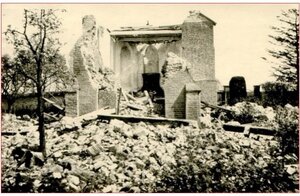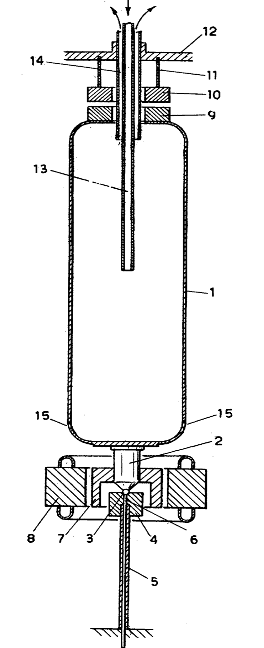In Memoriam Evert Muijderman (1931 – 2022)
On 14 December 2022, Evert Muijderman from Geldrop passed away. He was a part-time professor in Tribology at the Faculty of Mechanical Engineering (1988-1996) in both the Mechanics as well as in the Power Transmission and Tribotechnology Group.
In his memoirs, Evert writes: "When people sometimes ask me what I did at Philips, I usually say: 'Your memory disk, the HDD in your PC, but also those of all other PCs all over the world, run on bearings I invented'

In Memoriam Evert Muijderman (1931 – 2022) by Harry van Leeuwen
Evert Muijderman was born on 3 February 1931 in Hedel, at the river Maas. His nickname was 'Eep', to his family and relatives. To colleagues, he was called ‘Evert’. His life was marked by his experiences as a schoolboy in the Second World War and induced him to later become a pacifist.
His family's house was close to the bridge over the Maas River. On 17 September 1944, the Battle of Arnhem, also known as Operation Market Garden, began. The Allies bombed the bridge and also Hedel, and the Muijderman family fled. The family's house was completely destroyed. After wandering around for weeks, the family found shelter nearby, in the little church of Hedikhuizen. Along with others, 42 displaced people felt safe in the foot of the church tower, because of its thick walls.
To prevent the Allies from using tall structures as observation posts, German soldiers hung heavy bombs on facades and towers. Two such bombs also hung from Hedikhuizen's spire. Evert realised that the whole building, including the tower, might be blown up and he managed to evacuate all the people. Just in time, see Figure 1. Elsewhere, it went horribly awry. For the same night, 4-5 November, for instance, bombs exploded in Heusden town hall, killing 134 people. During the war, the family was constantly on the move, eventually returning to another house in Hedel.

During the war, Evert missed a year of school, to attend HBS (high school) in Zaltbommel from 1945. In 1949, he left for TH Delft, where he studied Mechanical Engineering. In 1954, he did an internship at the Philips Garage, where his mentor introduced him to the NatLab (Philips' Physics Lab). This made a lasting impression. He graduated in 1955 in Vehicle Engineering with Van Eldik Thieme. Evert had questioned military service, but felt then compelled to do it anyway. He found the NatLab fascinating, so he wanted to work there and only there. However, mechanical engineers with Philips only worked in industrial mechanisation. Thanks to his stubbornness, Evert was allowed to work at the NatLab, in 1956 while serving in the army, and since 1958 full time.
His first boss, Herre Rinia, suggested him to choose from three options. Evert choose the research into a principle for an axial bearing. There was virtually no knowledge at that point so Evert invented everything himself. In the experimental field, too. The application was in the field of axial bearings in consumer goods, such as record players. The same problem occurred in axial bearings of the ultracentrifuge (figure 2), a device for enriching uranium, which is needed for nuclear power plants or nuclear weapons. This was extremely important research. After all, it was the time of the Cold War. The Netherlands was in the race to build a plant for that purpose, and this project literally ran aground on the bearing. The Verenigde Machinefabrieken Stork-Werkspoor (VMF) carried out the project, and Jaap Kistemaker was project manager. Rinia sat with Kistemaker on the Committee of Advisors for this project and knew about these problems. The existing solutions had no load-bearing capacity and the result was severe wear and a complete failure.
Studying in the NatLab library, Evert suddenly realised that he had seen an English article on air-lubricated hydrodynamic bearings, which included a drawing of an axial bearing with a repetitive groove pattern in the surface. Could that be the solution? It referred to a paper by Whipple (1949), who worked for the British Atomic Energy Agency A.E.R.E., but all this was secret. This work was and remained unavailable and Evert had to go his own way. By intuition, he drew a groove pattern, which the NatLab workshop made with great precision. At the first attempt, the bearing functioned superbly. It was called the spiral groove bearing (SGB). Rinia and Kistemaker immediately came to see how the bearing performed in the lab.
Rinia sent Evert to VMF-Stork's Physical Dynamics Research Laboratory (FDO) towards the end of 1958, where work on the ultracentrifuge was underway under Kistemaker. A year before, the project team chose an axial sliding bearing of the hydrosphere type (figure 2, sphere 3 rests on sleeve 4). There, Evert regularly discusses the progress of his research on bearings with groove patterns. He contributes the theoretical knowledge, and Hans Baron of Werkspoor-Stork deals with manufacturing methods. Both are crucial. After a few years, he notices that the entourage as a whole is becoming very mysterious. The ultracentrifuge project finds itself under the Ministry of Defence. Evert has to sign a secrecy agreement but pertinently refuses. He breaks off all contacts in 1964.

Meanwhile (1963), Evert had become group leader of the Mechanics and Tribology Group. The daily management took up a lot of his time, but that did not prevent him from also continuing to work on the spiral groove bearing himself, together with his staff. From 1972, Pakistani metallurgist Abdul Qadir Khan, commonly referred to as "Dr Khan", has been working at FDO. In the second half of the 1970s, he sought contact with Evert. About what can be guessed. Evert also receives mysterious packages that he is supposed to hand over to another professor, which he does not do. Evert is not replying to anything and reports all this to the Philips management. Afterwards, he notices that his desk has been snooped on several times. What this may have been was never made clear. There is a BVD (AIVD) file containing three documents on Evert, but he does not get to see anything, even after 40 years.
Evert devoted his life to making the spiral groove bearing a great success from the 1960s onwards. He obtained his PhD on it cum laude in 1964, with Harmen Blok in Delft. Applications are many, in roughly chronological order (a) ultracentrifuges, (b) video cassette recorders, (c) X-ray tubes (see Figure 3), (d) laser scanners, (e) free piston compressors (for cooling equipment), (f) high-pressure compressor seals (SGGS), and finally (g) hard disk drives (HDDs). Almost all of these applications were or are highly successful.
In 1971, Evert was appointed extraordinary professor of Tribology at TH Delft. His inauguration, entitled "On bearings and armies", caused considerable commotion because of his pacifist views. In 1988, he resigned from the (now) TU Delft because the promised staff expansion did not take place. In 1988, Philips offered him early retirement. Jan Janssen of TU/e asked him to come to TU/e, Faculty W, as an extraordinary professor. He was associated with it until 1996, when he retired.
From 1964 - 2005, Evert did much to raise awareness of the issue of war and peace in the Netherlands. After an intensive period of reflection and many conversations with an anabaptist pastor, Evert decided in 1964 to be acknowledged as a conscientious objector. He applied to the Military Service Conscientious Objectors Act Committee, which resulted in recognition on 26 June 1964. The pastor asked him a short time later to become a member of this Commission. He was by far the youngest member and a mechanical engineer among all lawyers. He remained a member until 2005, when the Commission had little work left due to the suspension of compulsory military service. From 1978-1990, Evert was a Dutch member of the Pugwash Committee (an international association of scholars, started in 1957 by a number of Nobel laureates). He gave many lectures on (nuclear) armament in all kinds of contexts and spoke about it on radio, TV and in newspapers.
He also was a founder of the Historical Museum Hedel Foundation, and later a member, treasurer and honorary member. In Germany, Evert was a popular and highly respected guest lecturer at the Technische Akademie in Esslingen (TAE, 1982-2002). When asked, he helped many industries in applications of the SGB. Finally, he was a member of the Tribology Section of the Dutch Society for Materials Science (1988-1996).
Evert received the Georg Vogelpohl Ehrenzeichen 2020 from the German Gesellschaft für Tribologie (GfT). This is the highest German award for meritorious work in research, development, application or dissemination of tribological knowledge.